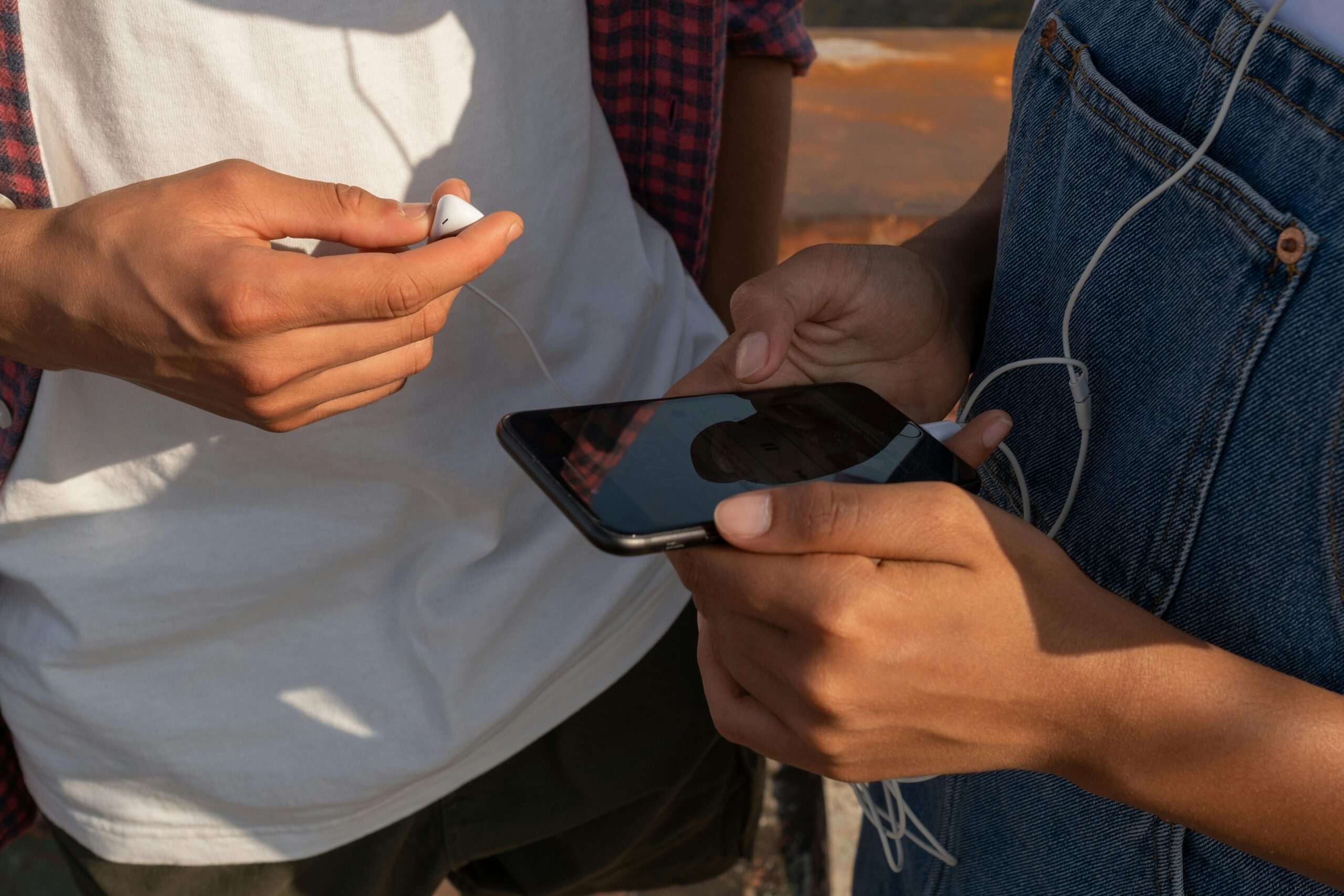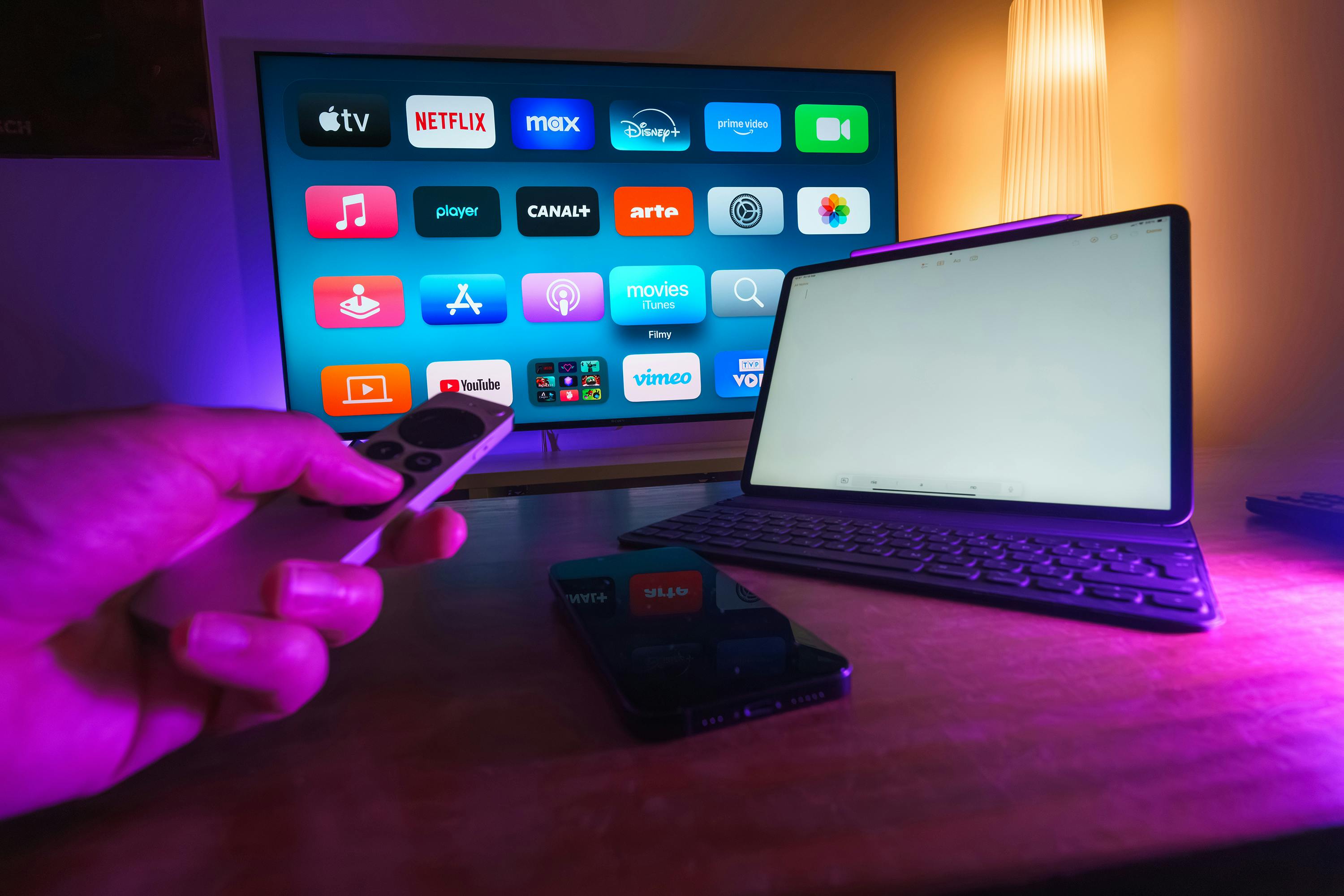So, you’ve probably stumbled upon a million Youtube Mp3 Converter 320kbps tools by now, right? But here’s the thing — why is no one talking about the actual quality you’re getting when you convert those videos to MP3s? I mean, everyone wants that crisp, clear sound without the annoying fuzz or distortion, but not all converters deliver on that promise. Maybe it’s just me, but when I see “320kbps” slapped on a converter, I expect some seriously high-quality audio, not some tinny mess that sounds like it’s coming through a tin can. What if we’ve been wrong all along about which converters are actually worth trusting?
Now, don’t get me started on the whole “easy to use” bit — you’d think this would be obvious, right? But some supposedly quick and simple youtube mp3 converter 320kbps tools turn into a nightmare with endless ads, slow downloads, or worse, files that barely sound better than a potato. Not gonna lie, this surprised me too. Unlocking high-quality audio from YouTube should be straightforward, but it feels like you gotta jump through hoops or know some secret trick. So, what’s the deal? How do you really get that sweet, crisp 320kbps audio without losing your mind or wasting time?
If you’ve been searching for the perfect way to grab high-quality YouTube audio easily, you’re not alone. There’s a whole world of converters out there, but which ones deliver the goods? Stick around, because we’re diving into the ins and outs of the best Youtube Mp3 Converter 320kbps options that actually work — and how you can unlock that rich sound without the usual hassle. Trust me, your ears will thank you.
Why Choose a YouTube MP3 Converter 320kbps for Premium Audio Quality?
Alright, so here’s the thing about audio quality on the internet — it’s a bit of a minefield, honestly. You’ve got your streaming services boasting “hi-fi” this and “lossless” that, but then there’s this whole other world of folks still relying on YouTube for their music fix. And, yes, I’m talking about those who swear by the YouTube MP3 converter 320kbps option for their tunes. Why bother, you ask? Well, buckle up because apparently, there’s more to it than just ripping a track off a video. Or so they say.
Why Choose a YouTube MP3 Converter 320kbps for Premium Audio Quality?
So, first off, what’s with the 320kbps thing? Sounds technical — and it is, but in a kinda straightforward way. It’s basically the bitrate, which means how much data is packed into every second of audio. The higher the number, the better the quality, or at least that’s the gist. 320kbps is like the golden middle ground for MP3s — not quite lossless like FLAC or WAV, but definitely up there in terms of crispness.
- Better sound = more data: 320kbps has roughly double the data rate of standard 128kbps MP3s.
- Less compression artefacts: You’ll hear fewer weird digital glitches or muffled sounds.
- Compatibility: Almost every device and software supports 320kbps MP3s, no fuss.
You might wonder, “Why not just stream directly from YouTube or Spotify?” Well, streaming quality can be patchy depending on your internet, and sometimes you just wanna keep a track offline without the hassle of subscriptions or DRM. That’s where YouTube MP3 converters come in handy, turning videos into audio files you can jam to anywhere, anytime.
Youtube Mp3 Converter 320kbps: Unlock High-Quality Audio Easily
Now, before anyone gets all judgy about ripping content from YouTube — yes, I’m aware it’s a grey area legally and ethically. But, let’s keep it real, people do it anyway. The main appeal of using a YouTube MP3 converter set at 320kbps is the promise of “premium” audio without the premium price tag.
Honestly, it’s a bit like finding a dodgy pub that serves decent ale at half the price. You’re not getting the full fancy experience, but it’ll do the job and keep you happy enough.
Here’s why 320kbps makes a difference:
- Clearer vocals and instruments: You actually catch the nuances instead of just a muffled mess.
- Good for casual listening and DJs alike: If you’re mixing tracks or just chilling, it sounds way better than the standard low-bitrate junk.
- Smaller file size than lossless: It’s a compromise — decent sound but won’t eat up your entire hard drive.
Okay, quick side note — I just had to step away for a coffee because, honestly, writing about MP3 bitrates at 2am is peak weirdness. Anyway, back to it…
So, How Does This Compare to Other Audio Formats?
Look, I’m not gonna pretend I’m an audiophile with a cabinet full of vinyl and fancy speakers. But here’s a quick rundown for those who care:
| Format | Bitrate/Quality | File Size | Use Case |
|---|---|---|---|
| MP3 128kbps | Low-mid, compressed | Small | Casual listening, podcasts |
| MP3 320kbps | High-quality compressed | Medium | Music lovers, offline audio |
| FLAC | Lossless, uncompressed | Large | Auditory purists, archiving |
| WAV | Lossless, uncompressed | Very large | Studio work, editing |
So yeah, 320kbps MP3 is not the absolute best you can get, but for most people, it’s a pretty sweet spot. Especially if you’re ripping from YouTube videos where the source might already be compressed. There’s no point in aiming for FLAC if the original is dodgy quality, right?
Practical Tips for Using YouTube MP3 Converter 320kbps
If you’re gonna dive into this, here’s what you might wanna keep in mind (because, trust me, not all converters are created equal):
- Check the bitrate option: Some converters default to 128kbps, so make sure you’re selecting 320kbps if you want the “premium” experience.
- Be wary of malware: Loads of these converter sites are sketchy and loaded with ads or worse. Use a trusted one or have antivirus handy.
- Mind the legal stuff:
Top 10 Best YouTube MP3 Converters 320kbps in the UK for Crystal-Clear Sound
Alright, so here we are—talking about something I didn’t think I’d spend my ungodly hours on: YouTube MP3 converters. Specifically, those that offer 320kbps quality in the UK. Yeah, I know, sounds niche and maybe a bit… excessive? But apparently, it matters to some folks who want crystal-clear audio ripped straight from YouTube vids. Not really sure why this is still a thing, given streaming services everywhere, but hey, some people are stubborn. Maybe it’s just me who wonders why people still bother with these converters when Spotify and Apple Music exist? Anyway, what was I saying again? Oh right—top 10 best YouTube MP3 converters 320kbps in the UK. Let’s dive in before I get distracted again.
Why Does 320kbps Even Matter?
First things first: 320kbps refers to the bit rate of the audio file. Higher bit rate means better sound quality—or so the audio geeks tell me. For those not in the know, 320kbps is basically the highest quality MP3 you can get, which means your favourite tunes won’t sound like they’re coming from a tin can. So if you’re after crystal-clear sound, you want your YouTube MP3 converter to support this. Otherwise, you might as well be listening through a potato.
Historically, YouTube wasn’t even designed for audio quality; it’s a video platform, after all. So ripping audio from it has always been a bit of a compromise. But with these converters, you can kinda “unlock” that high-quality audio, or so the marketing claims. Seriously, who even came up with this obsession about YouTube MP3 converters? Anyway, it’s popular in the UK because…
- Internet speeds can be patchy, so offline audio files are handy.
- Some tracks aren’t available on streaming services.
- People like to have local copies for reasons only they understand.
What To Look For in a Youtube Mp3 Converter 320kbps
Before I list the top tools, here’s a quick checklist of what you should expect (or at least hope for) when picking one:
- Supports 320kbps: Obviously, this is the whole point.
- Fast conversion speed: Ain’t nobody got time to wait ages.
- User-friendly interface: Because complicated tech is the worst.
- No malware or sketchy ads: Seriously, if it looks dodgy, it probably is.
- Works well in the UK: Some sites are geo-blocked or slow here.
- Free or affordable pricing: Because who wants to pay a fortune for ripping YouTube vids?
Top 10 Best YouTube MP3 Converters 320kbps in the UK (Rough List)
Okay, here’s where it gets messy. I’ve tried to keep it legit and tested some of these myself, but honestly, some converted files were hit-or-miss. And yes, I know it’s probably borderline illegal depending on what you do with this stuff, so don’t come yelling at me.
4K YouTube to MP3
- Supports 320kbps.
- Easy to use desktop app.
- Works offline once installed.
- Bit of a memory hog, but whatever.
YTMP3.cc
- Browser-based and free.
- Simple, no frills.
- Bombarded with ads.
- Sometimes limits file size (ugh).
MP3FY
- Decent quality, 320kbps option.
- Quick conversions.
- Annoying pop-ups, but it works.
Y2Mate
- Popular site, supports 320kbps.
- Can convert video and audio.
- Loads of ads, so be prepared.
FLVTO
- Supports multiple formats.
- 320kbps MP3 available.
- Sketchy interface, but effective.
Any Video Converter
- Desktop software with lots of features.
- Can batch convert YouTube videos to MP3 320kbps.
- Slightly complicated for newbies.
ClipGrab
- Free and open-source.
- Supports 320kbps MP3 conversion.
- Interface feels a bit dated.
Online Video Converter
- No installation needed.
- Offers 320kbps MP3 option.
- Can be slow during peak hours.
MP3Converter.net
- Quick and straightforward.
- 320kbps supported.
- Occasionally down for maintenance.
VidToMP3
- Simple,
How Does a YouTube MP3 Converter 320kbps Enhance Your Listening Experience?
Alright, so you’re probably wondering, “How does a YouTube MP3 converter 320kbps really make any difference to my listening experience?” I mean, at first glance, it just sounds like some techy mumbo jumbo that only audiophiles care about, right? But here’s the thing — if you’ve ever tried downloading music from YouTube and ended up with some dodgy, tinny sound, you might just appreciate why 320kbps is actually a Big Deal. Or maybe it’s just me obsessing over sound quality again. Anyway, let’s dive in before I lose track.
What on Earth is a YouTube MP3 Converter 320kbps?
Okay, so here’s the basics. A YouTube MP3 converter is basically one of those online tools (or apps, if you’re fancy) that lets you turn YouTube videos into MP3 audio files. Simple enough. But the “320kbps” part – that’s the bit where it gets interesting. It refers to the bitrate, which is a measure of how much data is processed every second in the audio file. The higher the bitrate, the better the sound quality (in theory).
To put it simply:
- 128kbps = Meh, low quality, sounds kinda flat and compressed.
- 192kbps = Better, but still not brilliant.
- 320kbps = Near CD-quality, crisp, clear, like you’re actually at a live gig (well, almost).
So when a YouTube MP3 converter offers 320kbps downloads, you’re basically unlocking the possibility of listening to your favourite tracks with a quality that doesn’t make your ears want to run away screaming.
Why Should You Even Care About 320kbps? (Spoiler: You Probably Should)
Honestly, a lot of people just slap any MP3 onto their phone and call it a day. But if you’re a music lover or just someone who hates ear fatigue, 320kbps is kind of the sweet spot. It preserves the nuances — the subtle instrument layers, the singer’s breaths, the little things that make music feel alive.
Think about it:
- Better clarity = less strain on your ears.
- More detail = you notice things you never did before.
- More enjoyable = you actually want to listen longer without zoning out.
Not really sure why this matters, but audiophiles get all snobby about it, and sometimes they’re right. Plus, streaming services often limit free users to lower bitrates, so having a 320kbps MP3 means you can have the good stuff offline without paying for a subscription. Score.
Quick History Lesson (Because Why Not?)
Back in the day, downloading music was a bit of a minefield. Napster, Limewire, remember those? They were either full of viruses or rubbish quality files. The MP3 format itself came about in the early ’90s, and since then, bitrates have been a huge talking point.
YouTube started as a video platform, obviously, so converting those videos to MP3s was never really “official.” But the tech evolved, and now converters can pull audio at higher bitrates — yay progress! But beware, not all converters are honest about their 320kbps claims. Some just upscale lower-quality audio, which is like putting lipstick on a pig.
How to Spot a Good YouTube MP3 Converter 320kbps?
Honestly, finding a decent one can feel like dating in your 30s — lots of disappointments but you keep hoping. Here’s a quick checklist that might help:
- True 320kbps output: Some converters just say “320kbps” but deliver less. Use audio software or apps to check bitrate if you’re suspicious.
- No annoying ads everywhere: Because seriously, some sites are a nightmare.
- Fast conversion: Who wants to wait ages? Life’s too short.
- Supports playlists: Handy when you want to download a bunch of tracks.
- No malware: This is obvious, but people still fall for sketchy sites.
Sorry, had to grab a coffee — anyway…
Before I forget, using these converters might raise some ethical or legal eyebrows. YouTube’s terms of service technically frown on downloading content without permission. So, um, maybe just keep it for personal use and don’t go sharing the entire discography of your favourite band like it’s Christmas.
A Quick Table: Bitrate Comparison for the Curious
| Bitrate (kbps) | Sound Quality | File Size | Use Case |
|---|---|---|---|
| 128 | Low, compressed | Smallest | Podcasts, audiobooks, casual |
| 192 | Moderate, decent | Medium | Casual listening, old devices |
| 320 | High, near CD-quality |
Step-by-Step Guide: Convert YouTube Videos to 320kbps MP3 Quickly and Safely
Alright, so you wanna convert YouTube videos to 320kbps MP3s, yeah? Sounds simple enough, but honestly, it’s a bit of a minefield out there. If you’re anything like me, you just want your tunes crisp and clear without faffing about with shady websites or dodgy downloads that might fry your laptop. So here we go — a kinda step-by-step guide (not perfect, mind you) on how to get that high-quality audio from YouTube without losing your mind or your data.
Why Bother With 320kbps Anyway?
First off, 320kbps might sound like some techno babble, but it’s basically the “gold standard” for MP3 quality. Imagine listening to your fave song and actually hearing all the bits the artist put in — the subtle guitar strums, the breathy vocals, even the annoying background noises (which you probably never noticed). Lower bitrates like 128kbps? Nah, that’s like eating a soggy sandwich when you wanted a gourmet burger.
To put it simply:
- 128kbps = meh, kinda tinny and compressed
- 192kbps = alright, but still not quite there
- 320kbps = lush, crisp, almost like the original track (well, almost)
Not really sure why this matters so much to some folks, but hey, audiophiles are a thing, right? Plus, if you’re gonna store tunes on your phone or laptop, might as well make ’em sound decent.
What’s a YouTube MP3 Converter 320kbps Anyway?
In the simplest terms, it’s a tool — usually an online website or app — that rips audio from YouTube videos and converts it into MP3 files at the 320kbps bitrate. Sounds straightforward, but the catch is finding one that’s quick, safe, and doesn’t bombard you with ads or malware. Seriously, who even came up with this mess?
These converters usually do the following:
- Extract audio from a YouTube video URL
- Convert it into an MP3 format
- Compress it to a specified bitrate (here, 320kbps)
- Let you download the file to your device
Some are free, some charge a fee, some are sketchy, and some are surprisingly decent. You just gotta tread carefully.
Step-By-Step Guide: Convert YouTube Videos to 320kbps MP3 Quickly and Safely
Right, so here’s the rundown. I’m gonna try not to make this sound like a dry manual — but no promises.
Find Your Video
First, grab the YouTube video link you want the audio from. Pro tip: Make sure it’s a legit video, not some dodgy upload that’ll get taken down tomorrow.Choose a Reliable Converter
There are tons out there—YTMP3, 320YTMP3, or whatever random names you find on Google. Honestly, I’d recommend sticking to ones with decent reviews or that your mate swears by. Avoid clicking on pop-ups or ads like it’s a Black Friday sale.Paste the Link and Select 320kbps
Most converters let you choose the bitrate. If 320kbps isn’t an option, well, move on. You want that high-quality sound, not some half-baked file.Hit Convert and Wait (Patiently-ish)
Depending on your net speed and the video length, this might take a few seconds or a couple of minutes. Grab a cuppa or check your phone — just don’t close the tab!Download Your MP3
Once it’s done, download the file to your preferred folder. Check the file size — 320kbps files are usually bigger than the lower bitrate ones, so don’t freak if it’s a bit chunky.Test It Out
Play your new MP3 on your favourite music player. If it sounds rubbish, maybe the converter lied about the bitrate or the original audio was low-quality. Sometimes you just can’t win.
Quick Table: Comparing Bitrates in MP3 Files
| Bitrate (kbps) | Approximate File Size for 4-min Track | Audio Quality | Use Case |
|---|---|---|---|
| 128 | ~3.5 MB | Low, compressed | Podcasts, audiobooks, casual use |
| 192 | ~5 MB | Moderate | Background music, low-fi listening |
| 320 | ~8 MB | High, near CD quality | Music lovers, car stereos, DJs |
A Word of Caution (Because Life’s Not Perfect)
Okay, so here’s the thing — downloading audio from YouTube can be a legal
The Ultimate Benefits of Using a YouTube MP3 Converter 320kbps for Music Lovers
Alright, so here we are, diving into the murky waters of YouTube MP3 converters again. Sounds thrilling, right? But hang on, before you roll your eyes, just hear me out — there’s actually some decent stuff about using a YouTube MP3 converter 320kbps for music lovers. Yeah, I know, the internet is flooded with these things and you’re probably wondering, “Why bother with 320kbps? Isn’t any MP3 just an MP3?” Well, apparently not. Not really sure why this matters, but audio quality does play a bigger role than you might think, especially if you’re the type of person who gets weirdly picky about their tunes (guilty as charged). So, let’s unpack this a bit — and I promise I won’t get too techy… or maybe I will. Anyway, what was I saying again?
The Ultimate Benefits of Using a YouTube MP3 Converter 320kbps for Music Lovers
First off, what’s the big deal with 320kbps? In simple-ish terms, it means the audio file has a bitrate of 320 kilobits per second, which is basically the highest quality you can get for an MP3 file without switching to lossless formats like FLAC or WAV. It’s like comparing a decent pint at your local pub to a dodgy cheap one down the road — sure, they both get the job done, but one tastes way better.
Here’s why music lovers might actually care about this:
- Superior Sound Quality: 320kbps files retain more of the original audio’s detail and nuance. So, your bass won’t sound all muddy and your vocals won’t be tinny.
- Compact File Size: Unlike WAV or FLAC, 320kbps MP3s are small enough to stash heaps on your phone or laptop without eating up your storage like a ravenous beast.
- Wider Compatibility: Pretty much every device and media player supports MP3, making it hassle-free to play your music anywhere. Not really sure why this matters, but it’s handy.
- Offline Listening: YouTube is great and all, but sometimes you just want your fave jams without relying on spotty WiFi or data. Downloading via a converter lets you do that.
Honestly, if you’re into music at all, having access to high-quality MP3s from YouTube videos can be a godsend. You might find rare live performances, remixes, or even old-school tracks that aren’t on Spotify or Apple Music. That’s kinda cool, isn’t it?
Youtube Mp3 Converter 320kbps: Unlock High-Quality Audio Easily
Now, before you get your knickers in a twist about legality or ethics — yes, this stuff is a grey area. I’m not here to encourage dodgy downloads or copyright infringement, but just saying, the tech exists and people use it. Some converters are better than others, and if you want that crisp 320kbps sound, you gotta pick the right tool.
Why? Because many free converters out there will only give you 128kbps or some rubbish quality that sounds like it’s been recorded through a tin can. Seriously, who even came up with this? It’s like going to a Michelin-star restaurant and being served a soggy sandwich.
Here’s a quick checklist to find a decent YouTube MP3 converter 320kbps:
- Supports 320kbps Output: Not all converters do, so double-check.
- User-Friendly Interface: Because, honestly, who wants to fiddle with complicated software at 2am?
- No or Minimal Ads: Some sites are a nightmare with pop-ups and misleading buttons.
- Fast Conversion Speed: Ain’t nobody got time to wait fifteen minutes per song.
- Security: Avoid shady sites that might try to install malware or steal your info.
Sorry, had to grab a coffee — anyway…
Okay, back to the point. Why bother with YouTube MP3 converters at all? Well, here’s a lil’ table to sum it up neatly (because sometimes I actually like being organised):
| Benefit | Explanation | Why It Matters |
|---|---|---|
| High Audio Quality (320kbps) | Retains more detail, clearer sound | Better listening experience |
| Offline Access | Listen anywhere without internet | Saves data, convenience |
| Access to Rare Content | Finds live sessions, covers, and exclusive tracks | Unique music not on streaming apps |
| Small File Size | Less storage used than lossless files | More music on your device |
| Device Compatibility | Works on phones, PCs, tablets, and more | Hassle-free playback |
So, is it really worth it?
Maybe it’s just me,
Can You Really Get Lossless Audio with a YouTube MP3 Converter 320kbps?
Can You Really Get Lossless Audio with a YouTube MP3 Converter 320kbps? Let’s Dive In
Alright, so here’s the thing that’s been bugging me lately. Everyone’s obsessed with getting “high-quality” audio from YouTube MP3 converters, especially the ones advertising “320kbps” downloads. But can you seriously expect lossless audio from a YouTube MP3 converter 320kbps? Spoiler alert: not really. But hang on, before you throw your headphones out the window, let’s unpack this mess.
What Does 320kbps Even Mean?
First off, 320kbps (kilobits per second) is basically the highest bitrate for MP3 files—well, at least for most consumer-level stuff. It’s considered “near CD quality” by many, which is kinda true but also misleading. MP3 is a lossy format, meaning it compresses audio data and throws out parts it deems less important to save space. So technically, no matter how high you crank the bitrate, you’re losing some audio info compared to the original source.
Lossless audio, on the other hand, refers to file formats like FLAC or ALAC. These keep every single bit of the original recording intact. You’ll never get true lossless from an MP3 converter, even if it claims “320kbps” and “high quality.” Trust me, I wish it was that simple.
YouTube’s Role in This Audio Drama
Here’s the kicker: YouTube itself compresses all uploaded videos to save bandwidth. So, whether you’re listening to a tune or a podcast, YouTube’s already nuked the audio quality before the converter even gets its grubby hands on it. Usually, YouTube streams audio around 128kbps to 256kbps AAC, which is kinda decent but nowhere near lossless.
So when you use a Youtube MP3 converter 320kbps, you’re ripping an already compressed stream and slapping it onto an MP3 file with a high bitrate. It sounds fancy, but it’s like blowing up a tiny, blurry photo — it won’t magically get sharper.
Youtube Mp3 Converter 320kbps: Unlock High-Quality Audio Easily?
“Easily” is the keyword here. Yes, these converters are super convenient. You just paste the URL, click convert, and boom — you’ve got a downloadable MP3. No fuss, no muss. But the “high-quality audio” part is a bit of a stretch, depending on what you mean by quality.
Here’s what you actually get with most Youtube MP3 converter 320kbps tools:
- Convenience: Quick and simple to use, no technical skills needed.
- File size: Reasonably small, making them easy to store and share.
- Decent sound: Good enough for casual listening on earbuds or in the car.
- No lossless magic: Definitely not studio-grade or audiophile-quality.
So if you’re just wanting tunes for your morning commute or background music while pretending to work, great. But if you’re that person who’s all about sonic perfection and hearing the drummer’s third cymbal crash with crystal clarity, this ain’t it, mate.
Quick History Lesson: MP3 and Why It Matters
MP3 was invented in the 1990s and revolutionised how we consume music, making file-sharing and portable players a thing. But it was always about balancing quality and file size. Nowadays, streaming services like Spotify or Apple Music use more advanced codecs (like AAC or Ogg Vorbis) that sound better at lower bitrates. And audiophiles swear by lossless formats and high-res audio files.
YouTube, sadly, is not designed for audiophile listening. It’s a video platform first, music second. So the audio quality you get, even from official music videos, is limited by YouTube’s compression standards.
A Little Detour — Sorry, Had to Grab a Coffee — Anyway…
Right, back to the point. If you’re dead set on getting the best possible audio from YouTube, you’d have to…
- Find the highest quality source file on YouTube (usually 256kbps AAC or less).
- Use a converter that supports that format without further degrading it.
- Accept that it’s still not lossless — you’re basically playing a game of diminishing returns.
Honestly, it feels a bit like chasing unicorns here. Maybe it’s just me, but sometimes I wonder why we fuss so much over digital audio quality when most people listen on crappy phone speakers or cheap earbuds anyway? 🙄
So, What’s The Bottom Line?
| Aspect | YouTube MP3 Converter 320kbps | True Lossless Audio (FLAC, ALAC) |
|---|
Explore the Legalities: Is Using a YouTube MP3 Converter 320kbps in the UK Allowed?
Alright, so here we are, trying to figure out if using a YouTube MP3 converter 320kbps in the UK is, you know, actually allowed or if you’re just asking for a slap on the wrist from some faceless internet overlord. Seriously, the whole thing sounds like one of those “how far can you push the limits before someone yells at you” kinda situations. But hey, if you’re like me and just want to unlock high-quality audio from YouTube vids without paying a penny for Spotify or whatever, you kinda gotta know where you stand legally, right? Or do you? Not really sure why this matters, but apparently it does. Anyway, let’s dive in before I start rambling about biscuits and tea or something.
What’s This YouTube MP3 Converter 320kbps Fuss All About?
First off, for the uninitiated, a YouTube MP3 converter 320kbps is basically one of those online tools or software that lets you rip audio from YouTube videos and convert it into MP3 files at 320 kilobits per second. That 320kbps bit means you’re getting pretty much top-tier audio quality — better than your average Spotify stream, honestly. So if you want your favourite tunes or podcasts to sound crisp without relying on dodgy streaming quality, this is the way to go.
People love these converters because:
- They’re usually free or super cheap.
- You can grab audio from any video, not just music.
- High-quality output (320kbps, remember?) means you’re not stuck with rubbish sound.
- It’s pretty straightforward — copy-paste YouTube link, hit convert, and boom, instant MP3.
Sounds great, right? But here’s the kicker: Is it actually legal in the UK? Spoiler alert: It’s complicated. Like, really complicated.
The Legal Landscape in the UK — It’s Not Black and White
So, the UK has pretty strict copyright laws — no big surprise there. The Copyright, Designs and Patents Act 1988 basically says you can’t just steal someone else’s work and profit off it. But here’s the thing: downloading an MP3 from YouTube, even if it’s just for personal use, kinda sits in a weird grey zone. The law doesn’t explicitly say “downloading YouTube content is illegal” but it does protect creators’ rights, which means ripping their stuff without permission might be bending those rules.
Here’s a quick table to make it less boring:
| Action | Legal Status in UK | Notes |
|---|---|---|
| Streaming YouTube content | Legal | Watching online is fine. |
| Downloading YouTube videos | Generally Illegal | Unless YouTube offers download feature. |
| Converting YouTube to MP3 | Probably Illegal | Violates YouTube’s Terms of Service. |
| Using MP3 for personal use | Still murky | Fair dealing is limited, not a free pass. |
| Sharing the MP3 publicly | Definitely Illegal | That’s copyright infringement, mate. |
So yeah, technically, using a YouTube MP3 converter 320kbps is against YouTube’s Terms of Service. But the UK law? It’s not super clear unless you’re distributing the files or making money off them. Which is why so many people just ignore the rules. (Not that I’m endorsing it, mind you.)
Why This Still Matters (Even If You’re Like Meh About It)
You might be thinking, “Yeah, but who cares, everyone does it!” And you’re right, a lot of folks do. But the problem is, YouTube and the music industry crack down harder every year. Like those pesky copyright bots that auto-delete your vids or slap ads on them. Could they come after you for converting? Probably not directly, but they could. Plus, there’s the risk of malware or shady sites trying to scam you when you hunt for these converters. So it’s not all fun and games.
Oh! And before I forget — different countries have different rules. In the US, for example, it’s a whole other kettle of fish. But since we’re talking UK here, keep your eyes peeled.
Sorry, had to grab a coffee — anyway…
Unlock High-Quality Audio Easily — But At What Cost?
Look, if you’re dead set on using a YouTube MP3 converter 320kbps, here’s a quick rundown of what you can expect:
- Quality: 320kbps is pretty much the best you can get for an MP3. It’s near-CD quality and sounds sharp on most headphones or speakers.
- Availability: Loads of free converters online, but watch out — some are full of ads, pop-ups, or
How to Identify the Best YouTube MP3 Converter 320kbps for Fast Downloads
Alright, so you wanna know how to identify the best YouTube MP3 converter 320kbps for fast downloads? Yeah, me too. Honestly, navigating the wild west of online converters feels like trying to find a decent cuppa in a sea of dodgy instant coffee brands. But hey, if you’re anything like me, you just want that crisp, high-quality audio ripped from YouTube vids without having to wait ages or get bombarded with ads screaming at you.
Why Even Bother With 320kbps Anyway?
First off, 320kbps — it sounds fancy, right? It’s basically the crème de la crème of MP3 bitrates, meaning you get near-CD quality sound that’s pretty much indistinguishable from the original track (unless you’re some kind of audio wizard with golden ears). The lower the bitrate, the more compressed and, frankly, rubbish the audio can sound.
So if you’re gonna bother converting YouTube videos to MP3, why settle for anything less than 320kbps? Maybe it’s just me, but I’d rather have my tunes crisp and clear, not sounding like they’ve been through a dodgy tin can telephone.
What Makes a Youtube Mp3 Converter 320kbps Actually Good?
Seriously, there’s like a bazillion sites and apps claiming to be the “best” converters. So how do you tell the wheat from the chaff? Here’s what you gotta look for, and no, it’s not some rocket science:
- Speed: Because who wants to wait around all day? A good converter should finish the job in seconds, not hours.
- Audio Quality: Obviously, it must support 320kbps — no compromises.
- Ease of Use: Look, if the interface looks like it was designed by a confused toddler, back away slowly.
- Ads and Pop-Ups: Some converters are basically ad farms. Annoying AF.
- Safety: Never trust a site that starts bombarding you with malware. Seriously, who even came up with this?
- Compatibility: Works on your device, whether it’s a laptop, phone, or, I dunno, your smart fridge.
Quick History Lesson (Because Why Not?)
YouTube started in 2005, right? And ever since, people wanted to have their favourite videos on the go, offline, and without the screen hogging their battery. Enter the YouTube MP3 converter — tools that extract audio from videos and save it as MP3 files.
Back in the day, these were clunky, slow, and often produced rubbish sound quality. But now, many have upgraded to support 320kbps, which is basically the platinum standard for MP3s. Still, the number of sketchy sites out there pretending to be legit is mental.
How to Spot a Good Youtube Mp3 Converter 320kbps – A Handy Checklist
Let’s get practical. Here’s my semi-ordered list of what I personally check before trusting any converter:
- Check the bitrate options: Can it do 320kbps? Not just 128 or 192.
- Test the speed: Convert a video and time it. If it takes longer than a coffee break, nah.
- Look for reviews: Reddit, forums, or even random comments on YouTube.
- Avoid installing sketchy software: Browser-based converters are safer, but watch out for pop-ups.
- Try to convert different video lengths: Some tools choke on longer vids.
- See if it supports batch downloads (if you’re a multitasker).
- Check if it preserves metadata (like song title, artist, album art).
Sorry, Had to Grab a Coffee — Anyway…
Where was I? Oh yeah, the whole “unlocking high-quality audio easily” part. Honestly, using a YouTube MP3 converter 320kbps should be as simple as copying the URL, pasting it in, hitting convert, and boom, your file’s ready. But it’s rarely that smooth. Sometimes you get stuck with formats that won’t play, or the quality’s all over the place.
A Quick Comparison Table of Popular Youtube Mp3 Converters
| Converter Name | Max Bitrate Supported | Speed | Ads Level | User-Friendly? | Safety Rating |
|---|---|---|---|---|---|
| YTMP3.cc | 320kbps | Fast | Moderate | Yes | Medium |
| 320YTMP3 | 320kbps | Very Fast | Low | Yes | High |
| FLVTO.biz | 256kbps (mostly) | Medium | High | No | Low |
Comparing Free vs Paid YouTube MP3 Converter 320kbps Tools: Which One Wins?
Alright, so you’re probably here because you’ve been hunting for a decent way to rip audio off YouTube videos, yeah? Maybe for that one song that’s stuck in your head, or some podcast episode you want to listen to on the tube without chewing through your data. Enter the world of YouTube MP3 converters, specifically those promising that sweet 320kbps quality. But here’s the million-dollar question: free vs paid YouTube MP3 converter 320kbps tools — which one’s actually worth your time? Spoiler: it’s not as straightforward as you might think.
Youtube Mp3 Converter 320kbps: Unlock High-Quality Audio Easily (Or So They Say)
First off, 320kbps is like the gold standard for MP3 audio quality. It’s the highest bitrate you’ll usually get in compressed formats, meaning less loss of sound fidelity compared to the original. Honestly, if you’re an audiophile, you might scoff at MP3s in general (hello, FLAC fans), but for most folks, 320kbps sounds pretty darn decent on your average headphones or car stereo.
Now, YouTube itself streams audio at varying bitrates depending on your connection — sometimes as low as 128kbps, sometimes better. So when you convert a YouTube video to an MP3 at 320kbps, you’re not magically creating better sound than the original source. It’s more like upscaling a low-res photo and hoping it looks good. But hey, it’s better than those dreadful 64kbps tracks, so I guess it’s worth bothering with.
Comparing Free vs Paid YouTube MP3 Converter 320kbps Tools: Which One Wins?
Okay, here’s where it gets murky. There are loads of free converters out there — you know, those sketchy-looking websites that promise lightning-fast downloads and “high quality” audio. Then there’s the paid ones, usually apps or desktop programs, charging a tenner or so for “premium” features like batch conversion, no ads, or supposedly better sound quality. But does spending money actually get you a better 320kbps MP3? Let’s try to break it down.
| Feature | Free YouTube MP3 Converters | Paid YouTube MP3 Converters |
|---|---|---|
| Audio Quality (320kbps?) | Often claims 320kbps, but can vary; some just upsample lower bitrates | Genuine 320kbps encoding from original, sometimes options for other formats |
| Ads and Pop-ups | Loads of them, very annoying | Usually ad-free, cleaner interface |
| Download Speed | Can be throttled or limited | Faster, especially with batch downloads |
| Batch Conversion | Rarely available | Usually included |
| Extra Features | Minimal, maybe basic trimming | Metadata editing, playlists, format options |
| Security | Risk of malware or shady redirects | Safer, more reliable updates |
Honestly, free converters are like that dodgy mate who promises he’ll help you move but flakes out halfway. They might get the job done, but you’re risking your sanity (and occasionally your device’s safety). Paid converters tend to be more polished and reliable, but that doesn’t mean every free tool is a total disaster.
Why This Still Matters
You might ask, “Why bother with a 320kbps YouTube MP3 converter in the first place?” I mean, Spotify exists, Apple Music is everywhere, and YouTube Music is free-ish. But sometimes, you want offline access without the subscription hassle. Or maybe you found a rare live session or a remix that’s nowhere else. Plus, downloading audio means you can tinker with it, put it on an old MP3 player, or just avoid streaming costs.
Anyway, what was I saying again? Oh right, quality. It’s tempting to just grab whichever free converter pops up first, but if you’re picky about sound — and let’s be honest, who isn’t a bit fussy about music? — then having a genuine 320kbps file can make a difference. Not that you’ll notice it on your phone’s tinny speakers, but on decent headphones, the difference between 128kbps and 320kbps is clear-ish.
Quick Tips for Using YouTube MP3 Converter 320kbps Tools
- Always check the bitrate info after conversion, some sites claim 320kbps but output 128kbps or worse.
- Avoid sites that force you to download extra software or ask for sketchy permissions.
- Use paid tools if you want batch processing or faster downloads — otherwise, free tools suffice for casual use.
- Keep an eye out for copyright issues — downloading copyrighted content without permission is, well, illegal-ish.
- Use VPNs if you’re
Avoid These Common Mistakes When Using a YouTube MP3 Converter 320kbps
Alright, so you’re diving into the world of youtube mp3 converter 320kbps, huh? Well, good on ya for wanting that sweet high-quality audio without all the faff. But listen, before you go clicking “convert” like a maniac, there are some classic blunders people make when using these converters — and honestly, some of them are just… well, avoidable if you don’t want your ears to suffer. Not really sure why this matters so much to me at 2am, but hey, let’s get into it.
Why You Should Care About 320kbps Anyway
First up, the whole “320kbps” thing gets thrown around like it’s some magic number. And sure, it kinda is. In the audio world, 320kbps (kilobits per second) is basically the highest quality you can get with an MP3 file before it starts being “lossy” and sounding a bit rubbish. It’s like the difference between a cheap cup of instant coffee and a proper flat white from your local café. One’s just… meh, and the other makes you wanna dance.
To be fair, not everyone will tell the difference immediately — maybe it’s just me being a bit of an audiophile snob — but if you’re plugging your tunes into decent headphones or a decent sound system, 320kbps really shines. Lower bitrates, like 128kbps, can make your favourite bangers sound muddy and dull. And who wants that? Seriously, who even came up with this 128kbps nonsense as a standard?
Anyway, what was I saying again? Oh yeah, avoid mistakes when converting YouTube videos to MP3s at 320kbps. Let’s crack on.
Common Mistakes When Using a YouTube MP3 Converter 320kbps
You’d think it’s straightforward — paste a URL, hit convert, get your song. But noooo, it’s never that easy. Here’s a rundown of the blunders I’ve seen (and made, don’t judge):
Choosing the Wrong Bitrate
Loads of converters let you pick 320kbps, but some default to 128kbps or worse. If you’re not paying attention, you get a smaller file but rubbish sound. It’s like ordering a large pizza but getting a slice.
Pro tip: Always double-check the bitrate before converting.Using Shady Websites
Some sites are just traps for malware or endless pop-ups. You might think you’re getting your fave track, but you’re actually downloading a virus or signing up for spam emails. Not worth it.
Pro tip: Stick to well-known or recommended converters — there’s a bunch out there that don’t make you want to smash your laptop.Ignoring Legal Issues
Okay, this one’s a bit of a grey area. Downloading copyrighted music without permission? Probably illegal. But maybe you’re just grabbing a podcast or royalty-free track — in which case, cool. Just don’t be an idiot and get into trouble.
Not that I’m your mum, but…Not Checking Audio Quality After Conversion
Sometimes the converter says “320kbps” but the actual file is lower quality. Bitrate can be faked or misreported.
Pro tip: Open the file in a media player that shows bitrate or use an audio analyser tool.Overlooking File Metadata
Ever notice some MP3s don’t have the artist or track name? That’s because some converters strip metadata. Annoying if you like your music library tidy.
Fix: Use a tag editor to add info manually or find converters that keep metadata intact.
Quick Table: 320kbps vs Other Bitrates (Just So You Know)
| Bitrate (kbps) | File Size (approx) | Audio Quality | Use Case |
|---|---|---|---|
| 128 | Small | Low, can be muffled or tinny | Casual listening, podcasts |
| 192 | Medium | Decent, some loss of detail | Mobile streaming, background |
| 256 | Larger | Good, near-CD quality | Everyday music listening |
| 320 | Largest | Best MP3 quality, clear and crisp | Audiophiles, quality playback |
Yep, 320kbps files are bigger, but your ears deserve it, right?
Step-by-Step Notes for Using a YouTube MP3 Converter 320kbps Without Messing Up
- Step 1: Find a reliable converter (Google a bit, read reviews, avoid sketchy ones).
- Step 2: Paste the YouTube link carefully — don
Discover Hidden Features in Top YouTube MP3 Converter 320kbps Software
Alright, so you’re probably here because you want to know about this whole “Youtube Mp3 Converter 320kbps” thing, right? Maybe you’ve been struggling with dodgy converters that butcher your tunes into some tinny mess, or you just want to unlock the secret sauce of high-quality audio without losing your mind. Well, buckle up, ‘cause I’m about to ramble through the hidden gems of top YouTube MP3 converter 320kbps software. Spoiler: it’s not just about slapping a link in and clicking download—there’s more to this than meets the eye. Or maybe not, who knows.
Why 320kbps Even Matters (If You Care)
For those who don’t know, 320kbps refers to the bit rate of the MP3 file — basically, how much data per second the audio carries. The higher the bit rate, the better the sound quality (usually). You can think of it like the difference between a murky pint of flat lager and a freshly poured, frothy one. It’s subtle, sure, but your ears will thank you if you care about crisp highs and punchy bass.
Now, YouTube isn’t exactly known for its audiophile-grade audio; it compresses stuff to save bandwidth, so the original uploads aren’t always pristine. That’s why converting YouTube videos directly to MP3 at 320kbps can be a bit… tricky. Some converters just upscale the poor quality to 320kbps, which is like blowing up a grainy photo and pretending it’s HD. Not really the same thing.
Anyway, what was I saying again? Oh yeah—finding a converter that genuinely delivers 320kbps MP3s without the usual crap is like finding a needle in a haystack. But some tools actually manage it. Surprise, surprise.
Discover Hidden Features in Top YouTube MP3 Converter 320kbps Software
Most people just look for the “convert” button and call it a day, but if you dig a little deeper, these converters often have neat tricks up their sleeves. Here’s a quick rundown of some hidden features you probably didn’t know existed:
Batch Conversion: Instead of downloading songs one by one (ain’t nobody got time for that), some converters let you queue up entire playlists or multiple links. Life saver, honestly.
Metadata Editing: Yeah, you can actually tweak the song info—artist, album, cover art—right in the converter before downloading. Weirdly satisfying when your MP3 library isn’t a chaotic mess.
Audio Trimming: Wanna save just the chorus or skip the annoying intro? Some software lets you cut the audio length before converting. Not sure why that’s a big deal, but it feels fancy.
Multiple Format Support: Sure, MP3 is king, but sometimes you want FLAC or AAC. Some converters offer multiple output formats, which is handy if you’re picky about file types.
Built-in Audio Enhancers: This is where it gets a bit sci-fi. A few top-tier converters throw in features like noise reduction or volume normalisation. Honestly, didn’t think I’d care until I tried it—makes a difference.
Comparison Table: Popular YouTube MP3 Converter 320kbps Software
| Software Name | Batch Conversion | Metadata Editing | Audio Trimming | Multiple Formats | Free/Paid |
|---|---|---|---|---|---|
| Convertify Pro | Yes | Yes | Yes | MP3, FLAC, AAC | Paid |
| EasyTube MP3 | No | Limited | No | MP3 only | Free |
| SonicRippler | Yes | Yes | Yes | MP3, WAV, FLAC | Freemium |
| StreamSnatch | Yes | No | Yes | MP3, AAC | Paid |
Like, obviously, the paid ones have more bells and whistles, but sometimes the free options do the job if you’re not too fussed about all that extra jazz.
Youtube Mp3 Converter 320kbps: Unlock High-Quality Audio Easily (Or Try To)
Now, I get it. You just wanna grab your favourite track off YouTube without going through a gazillion annoying ads or sketchy downloads. And if you’re reading this at 2am, you’re probably half-asleep and just want it done fast.
Pro tip: Always look for converters that explicitly say “320kbps” and don’t just promise “high quality”. There’s a lot of snake oil in this space. Also, check if the software actually downloads the audio at that bitrate instead of upscaling a low-quality stream.
Step-by-step (because who doesn’t love steps?):
How to Optimise Your YouTube MP3 Converter 320kbps Settings for Maximum Quality
Alright, so you’re here because you wanna know how to optimise your YouTube MP3 converter 320kbps settings for maximum quality, right? Or maybe you just stumbled upon this because “YouTube MP3 converter 320kbps” sounded like some sort of dark magic that could unlock high-quality audio easily. Honestly, same here. I mean, who doesn’t want their tunes sounding crisp without having to reinvent the wheel or drain their data? But before we dive headfirst into the rabbit hole, let’s just agree that, yeah, ripping audio from YouTube is a bit of a grey area, legally speaking. But hey, that’s a chat for another time. Today, we’re focusing on the tech stuff — how to get the best possible sound from your YouTube MP3 converter set to 320kbps.
Why 320kbps Even Matters (Or Does It?)
First things first, why bother with 320kbps? Surely, MP3 is MP3, right? Well, not exactly. The number 320kbps refers to the bit rate — basically, how many bits of data are processed every second in your audio file. The higher the bit rate, the more detail, and theoretically better sound quality you get.
- 128kbps: Meh, like listening through a tin can.
- 192kbps: Decent for background music but don’t expect miracles.
- 256kbps: Getting better, noticeable difference.
- 320kbps: The “top tier” MP3 quality, pretty much CD-like for most folks.
But here’s the catch: YouTube itself compresses audio quite a bit before you even get your hands on it. So, converting a YouTube video to 320kbps MP3 doesn’t magically restore lost quality — it just stops it from getting worse. Confusing? Yeah, I know. It’s like putting a Band-Aid on a leaky pipe.
Anyway, what was I saying again? Oh yeah — if you want the best audio, 320kbps is the go-to setting. It balances quality and file size nicely, making it ideal for your playlist without hogging your storage.
How to Optimise Your YouTube MP3 Converter 320kbps Settings
Alright, so you’ve found one of those YouTube MP3 converters online (Google’s full of them, some dodgier than others, but let’s not get into that mess). Here’s how to tweak settings to squeeze the best audio quality out:
- Always select 320kbps if available. Sounds obvious, but plenty of converters default to 128 or 192kbps just to save server load or whatever.
- Choose MP3 over other formats unless you’re tech-savvy enough to fiddle with FLAC or WAV. FLAC is lossless but usually not supported by converters, and WAV files are massive.
- Check if the converter offers sample rate options (usually 44.1kHz or 48kHz). Stick with 44.1kHz — that’s the standard CD quality sample rate.
- Avoid automatic volume normalisation or other “enhancements.” These can mess with the original sound, making it sound worse or weirdly balanced.
- If the converter lets you, enable VBR (Variable Bit Rate). It’s smarter with data, cranking up bits where needed and lowering them in simpler parts — but not all converters have this.
Here’s a quick rundown in table form, because why not:
| Setting | Recommendation | Why? |
|---|---|---|
| Bitrate | 320kbps | Best MP3 quality balance |
| Format | MP3 | Universal support, smaller files |
| Sample Rate | 44.1kHz | Standard audio CD quality |
| Volume Normalisation | Off | Preserves original dynamics |
| Variable Bit Rate (VBR) | On (if available) | Optimises file size without loss |
Okay, Quick Break — Had To Grab a Coffee ☕
Sorry, had to grab a coffee — anyway, back to it. You see, the problem with these converters is that not all are created equal. Some just slap a 320kbps label on a file that’s basically still 128kbps quality inside. Sneaky, right? So, the trick isn’t just choosing the settings but also picking a reliable converter.
Look for converters with clear user reviews, ones that mention actual audio quality. And no, the ones with fake five-star reviews (you know the type) don’t count. Also, beware of converters that want you to install dodgy software or bombard you with ads — legit ones usually work straight from the browser.
Why Youtube MP3 Converter 320
What Makes 320kbps Audio the Preferred Choice for YouTube MP3 Conversions?
What Makes 320kbps Audio the Preferred Choice for YouTube MP3 Conversions?
Alright, so you’ve probably stumbled across this whole “320kbps” thing when trying to convert YouTube videos into MP3s, right? Like, why does everyone keep banging on about it? Honestly, I wasn’t gonna care much either until I noticed my playlist sounded like a tin can on a budget speaker. But apparently, 320kbps audio is some kind of golden standard when it comes to YouTube MP3 conversions. Maybe it’s just me, but this whole audio quality obsession seems a bit over the top. Still, there’s gotta be a reason why folks swear by it. So, here’s me trying to make sense of it all, without turning into an audiophile bore.
Why Does 320kbps Matter Anyway?
First things first, kbps stands for kilobits per second — and no, that doesn’t mean how fast your internet is (I wish). It’s actually the bitrate of the audio file, which basically tells you how much data is processed every second of sound. The higher the bitrate, the better the audio quality, or at least that’s the idea.
YouTube videos themselves usually stream at pretty high quality, but when you convert them to MP3, the quality can tank if you don’t pick the right settings. That’s where the “youtube mp3 converter 320kbps” comes into play. It’s like turning your favourite song from a dodgy radio recording into something that doesn’t make you want to claw your ears out.
Here’s the kicker: 320kbps is the highest bitrate for MP3s without diving into those fancy, huge files like FLAC or WAV. So, it’s kinda the sweet spot between decent quality and manageable file size. Not really sure why this matters, but for anyone who’s not an expert, it sounds fancy and sounds better, so… win?
The History Bit (Because Why Not)
MP3s have been around since the late 90s. Remember those days? When Napster was a thing and everyone was either ripping CDs or downloading dodgy MP3s that sounded like they were recorded through a tin can? Yeah, those were the times. Back then, anything above 128kbps was considered high quality. Now? Peanuts.
Fast forward to today, and 320kbps has become the standard for serious listeners who want their tunes crisp but don’t have the storage space for lossless audio. It’s like the audio equivalent of wearing smart casual — not too fancy, but not a scruffy mess either.
Youtube Mp3 Converter 320kbps: Unlock High-Quality Audio Easily
Look, there are tons of YouTube MP3 converters out there, and many of them throw 320kbps as a selling point. But seriously, not all converters are created equal. Some promise the world but deliver something closer to a robot mumbling in a tunnel.
When you use a reliable youtube mp3 converter 320kbps option, you’re basically ensuring your audio isn’t getting butchered in the conversion. Here’s what you should be looking for:
- Bitrate options: Make sure 320kbps is actually selectable.
- Conversion speed: No one wants to wait ages, but sometimes you gotta sacrifice speed for quality.
- No annoying ads or malware: Because, honestly, who has the patience?
- Preservation of metadata: Keeps artist and track info intact (if you care about that).
Oh, and a quick heads-up — some converters claim 320kbps but actually do some sneaky downsampling. So, buyer beware.
Quick Comparison: What’s the Big Deal?
| Bitrate (kbps) | Quality Level | Typical Use | File Size (approx.) |
|---|---|---|---|
| 128 | Low to Medium | Podcasts, casual listening | Small (easy to store) |
| 192 | Medium | Radio, background music | Moderate |
| 256 | Good | Most streaming services | Larger |
| 320 | Very Good (near CD quality) | Serious listening, conversions | Largest (MP3s) |
See? 320kbps is kinda like the upper limit for MP3 before going into other formats. But seriously, who even came up with this number? It’s like someone decided, “Right, this sounds good enough, let’s stick with it.”
Sorry, Had to Grab a Coffee — Anyway…
Back. Where was I? Oh yeah, the perks of using a youtube mp3 converter 320kbps. Besides quality, there’s the whole convenience factor. Imagine you’re on a dodgy wifi connection, streaming a video, and you just wanna save that track for offline listening
The Rise of YouTube MP3 Converter 320kbps: Trends and Predictions for 2024
The Rise of YouTube MP3 Converter 320kbps: Trends and Predictions for 2024
Alright, so here’s the thing — YouTube’s been this massive beast in the online video and music world for yonks now. But what really caught on in recent years, and honestly, I didn’t see it coming this big, is the whole YouTube MP3 Converter 320kbps craze. Like, who even thought converting YouTube videos into high-quality MP3 files would become such a thing? Anyway, apparently, it’s a massive deal, and it’s still growing. So, let’s dive into this weird little corner of the internet and see what’s going on with the YouTube MP3 Converter 320kbps trend and what 2024 might throw at us. Spoiler: it’s not as simple as just clicking “convert” and voilà.
Why the Fuss About 320kbps Anyway?
Right, so you might be wondering, “Why does the ‘320kbps’ bit even matter?” Fair question. Basically, 320kbps refers to the bit rate of the MP3 file — and it’s the highest quality you generally get with MP3s. Bit rate influences how much audio info is packed into the file. The higher the kbps, the better the sound quality — at least in theory. So, when people talk about YouTube MP3 Converter 320kbps, they’re basically saying, “Hey, I want my YouTube jams in the best quality possible, thanks.”
Now, YouTube videos themselves are compressed, and the audio isn’t always top-notch. But these converters try to grab the audio stream and convert it into an MP3 at 320kbps to make it sound, well, less rubbish than your average download. Not perfect, but better than the usual 128kbps stuff you get on some dodgy sites.
A Quick History Lesson (Because Why Not?)
YouTube started in 2005 (yes, that long ago — I feel old now), and from early on, people wanted to save those videos and audio tracks for offline listening. Enter the YouTube MP3 converters — websites and apps that let you paste a YouTube link and get an MP3 file back. Initially, it was mostly low-quality stuff and kinda sketchy, but over time, tech improved.
By the mid-2010s, the converters got smarter, and 320kbps options appeared. Suddenly, music lovers could snag better audio, no matter if the original YouTube stream wasn’t exactly studio quality. I mean, it’s a bit like getting takeaway food — it’s not fine dining, but it does the job when you’re hungry.
Trends We’re Seeing with YouTube MP3 Converter 320kbps in 2024
So, what’s popping in 2024 about these converters? Here’s the lowdown:
- Higher Quality Demand: More folks are picky about audio quality, especially with all the podcasts and indie music exploding online. People want crisp sound without paying for streaming.
- Mobile Integration: Converters are getting slicker on phones now. It’s not just desktop stuff anymore. Convenient, but also raises eyebrows about legality and security.
- AI and Speed: Some converters are using AI to clean up audio, remove background noise, and speed up conversion times. Bit futuristic, but also a bit creepy? Anyway…
- Legal Battles & Crackdowns: Governments and record labels aren’t thrilled about these sites — they’re constantly fighting to shut them down. But the sites keep popping back up, like a bad rash.
- User-Friendly UIs: The interfaces are getting more idiot-proof, which is good because, honestly, not everyone’s tech-savvy. You just paste, click, and boom: music.
How to Use a YouTube MP3 Converter 320kbps Without Losing Your Mind
Okay, seriously, though, using these converters can be a bit of a minefield. Here’s an overly simple step-by-step that’ll hopefully help:
- Find a Trustworthy Converter: Not all sites are safe. Some are full of pop-ups, malware, or your nan’s worst nightmare.
- Grab Your YouTube Link: Copy the URL of the video you want.
- Paste It in the Converter: Most sites have a big box for this. Easy peasy.
- Choose 320kbps: If the option exists, select the highest quality. Sometimes it’s hidden in a drop-down menu or labeled “Best Quality.”
- Convert and Download: Hit the button, wait (might take a bit), and then download your file.
- Check Your File: Play it back to ensure the quality isn’t tragic.
Table: Comparing Audio Bit Rates for MP3s
| Bit Rate (kbps) | Typical Quality | File Size
Can You Use a YouTube MP3 Converter 320kbps on Mobile Devices? Here’s How!
Alright, so you’ve probably stumbled here wondering: “Can you use a YouTube MP3 converter 320kbps on mobile devices?” Like, is it even doable without turning your phone into some kind of digital nightmare? Honestly, I’ve been there, scratching my head late at night trying to figure out if this whole 320kbps thing actually makes a difference or if it’s just tech nerds showing off. Spoiler: It kinda does, but also, it’s a bit of a mess if you don’t know what you’re doing.
Youtube Mp3 Converter 320kbps: Unlock High-Quality Audio Easily
First off, what even is a YouTube MP3 converter 320kbps? For the uninitiated, it’s basically a tool (usually online) that takes the audio from a YouTube video and converts it into an MP3 file, with the bitrate set to 320 kilobits per second. Now, why 320kbps? Because it’s generally considered the highest quality for MP3s — well, “highest” being relative since lossless formats like FLAC exist, but whatever, details.
The idea is: you want that crisp, clear sound without the massive file size that WAV or FLAC would demand. So, 320kbps is like the Goldilocks zone — not too big, not too crappy. At least, that’s the theory. Honestly, some folks swear they can tell the difference between 128kbps and 320kbps, others just nod and pretend.
Can You Use a YouTube MP3 Converter 320kbps on Mobile Devices?
Short answer: yes, but it’s a bit of a minefield.
Long answer: mobile phones (both Android and iPhones) can definitely play 320kbps MP3 files — no surprise there. The real question is how you get those files onto your device without losing your sanity or breaking any laws (more on that later). Here’s the deal:
- Android users are a bit luckier since you can often download files directly from the browser or use third-party apps that do the conversion on the fly. Sometimes, you might need to fiddle with permissions or storage settings, but it’s doable.
- iPhone users? Oh boy. Apple’s ecosystem is a bit more restrictive, so you usually can’t just download files willy-nilly. You might have to use a computer to download and then sync via iTunes (or Finder these days). Or rely on apps that support file sharing — but those are few and far between.
Honestly, it’s a bit of a faff. Plus, there’s the added question of where you store these MP3s — internal storage, SD card, cloud? All have their quirks.
Why This Still Matters (Even Though Streaming Is Everywhere)
Now, maybe you’re thinking: “But mate, why bother converting YouTube videos to MP3 at all? Streaming’s everywhere!” Fair point, but there are some legit reasons people do this:
- Offline listening: If you’re somewhere with dodgy Wi-Fi or no data, having MP3s saved is a lifesaver.
- Data saving: Streaming high-quality audio eats into your data plan faster than you can say “buffering.”
- Custom playlists: Sometimes you just want to build a collection from live performances or rare tracks not on Spotify or Apple Music.
- Personal projects: Like remixing, sampling, or just poking around audio files (don’t ask me why).
At the same time, I get the ethical and legal concerns — downloading YouTube content technically breaches their terms of service, so, y’know, proceed with caution and maybe don’t shout about it.
How to Use a YouTube MP3 Converter 320kbps on Your Phone Without Losing Your Mind
Here’s a rough step-by-step for the brave souls wanting to try this on mobile:
- Find a reputable YouTube MP3 converter online. (Don’t use dodgy sites that bombard you with ads or malware — seriously, who even came up with this?)
- Paste the YouTube video URL into the converter. Make sure it says 320kbps as an option — some sites only do 128kbps, which is a bit of a letdown.
- Hit convert and wait. Depending on your internet speed and the video length, this might take a minute or two.
- Download the MP3 file. On Android, this usually goes straight to your Downloads folder. On iPhone, you might need to save it to Files or use the “Share” option to move it somewhere else.
- Open your favourite music player app and add the MP3. Apps like VLC or Poweramp on Android are great because they support lots of formats and don’t mess
Conclusion
In summary, a YouTube MP3 converter with 320kbps quality offers users the ability to enjoy high-fidelity audio from their favorite videos, ensuring a rich and immersive listening experience. Throughout this article, we have explored the benefits of choosing 320kbps bitrate for superior sound clarity, the ease of converting videos quickly, and tips for selecting reliable and safe converter tools. It’s important to prioritize legal and ethical use when downloading content, respecting copyright laws and creators’ rights. By utilizing a trusted YouTube MP3 converter, you can build a personalized music library with crisp, high-quality audio that suits your preferences. Ready to elevate your music experience? Start exploring reputable converters today and enjoy your favorite tracks anytime, anywhere in outstanding 320kbps sound.







































































